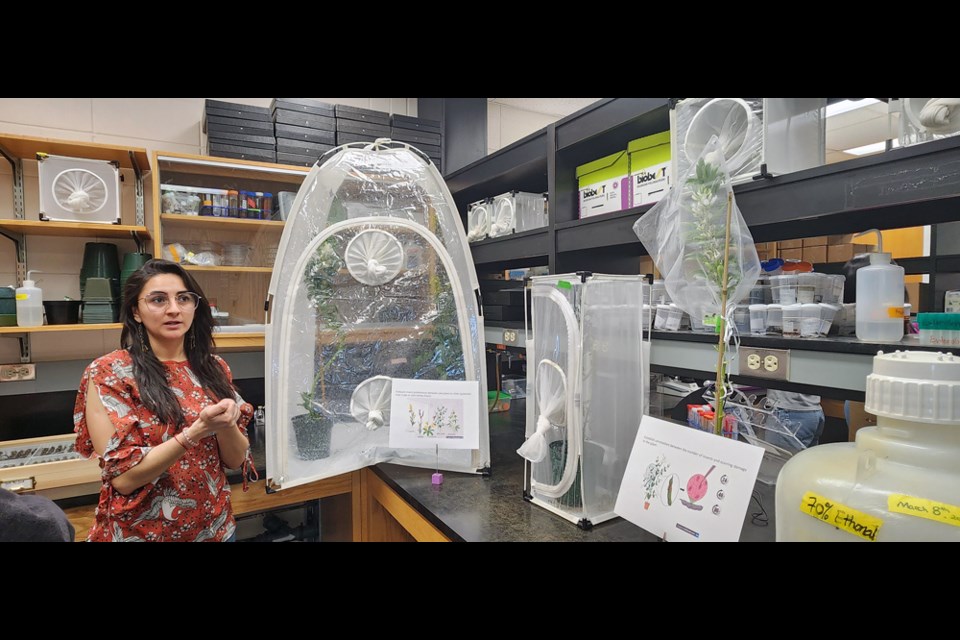SASKATOON — The University of Saskatchewan on Wednesday, April 5, opened its Insect Research Facility to study the behaviour of bugs and other pests behave in different environments.
The 500-square-foot facility, located on the sixth floor of the Agriculture Building, will help farmers and growers deal with infestations and prevent crop damage.
USIRF will be headed by College of Agriculture and Bioresources Associate Professor Dr. Sean Prager and his staff team, including Teresa Aguiar-Cordero, Georgina Antochi-Crihan, Tyler Hartl and Ning Zhou. Aguiar-Cordero and Hartl are both studying for a master’s in science post-graduate degrees.
Aguiar-Cordero focuses her research on lygus bugs in fava beans, while Antochi-Crihan is in charge of ground-dwelling arthropods like beetles. Zhou is a research assistant in the facility, receiving funding from various agricultural sources.
The Western Grains Research Foundation contributed $500,000 as part of its $32-million Capacity Initiative. The Canada Foundation for Innovation provided $285,000 and $70,000 each from the Saskatchewan Canola Saskatchewan Pulse Growers and the Saskatchewan Wheat Development Commission. The U of S also gave $50,000 towards the project.
The facility quarantines insects to prevent them from escaping and containing the pathogens they carry from spreading to the environment and crops.
“It is a series of rooms with operational and mechanical safeguards that allow us to keep things where they belong and then use those things for plants, insects and pathogens within our area,” said Prager.
“[It] allows us to use them within the greater entomological apparatus in the facility. The idea of a facility like this is you can do several things: you can make sure there is no cross-contamination, so the things you have won’t accidentally contaminate other things.”
The facility will study how bugs and pests react to specific environments and their resistance to certain pesticides and find what works for each type of insect.
“These things that live in the United States or Eastern Canada but are not here but you want to do work on. By having this biosecurity, we can work on them before they get here. We don’t worry about them accidentally,” said Prager.
He said that they are not only studying how bugs and pests, which cause harm to crops, react to specific environments but also their resistance to certain pesticides and see what works for each type of insect.
“You can have insects that are pests in other places that you want to see how they perform in some specified conditions. For example, the breeders may want to try to develop resistance to those insects, and we may want to do that ahead of when these insects get here because breeding programs take a long time, decades,” said Prager.
“This allows us to look at potential resistance to an insect that is not here. The other is that there are natural enemies to plants and or plant pests. So, you may want to look at insects with plants as their natural enemy. Also, we understand whether or not they would be useful, how effective they would be [and] could we ever release them?”
Their research focuses more on insects that may affect the multi-billion-dollar agricultural industry in the prairies that could damage crops in Western Canada, like canola, wheat, oats, and barley.
“Many things we are protecting or working with are known to be harmful pests in other places. The whole goal of the facility is to allow us to find ways to combat insects that would be harmful to products,” said Prager.
USIRF will also study natural enemies of plants and plant pests, understanding whether they would be helpful, how effective they would be, and whether they could ever be released.




